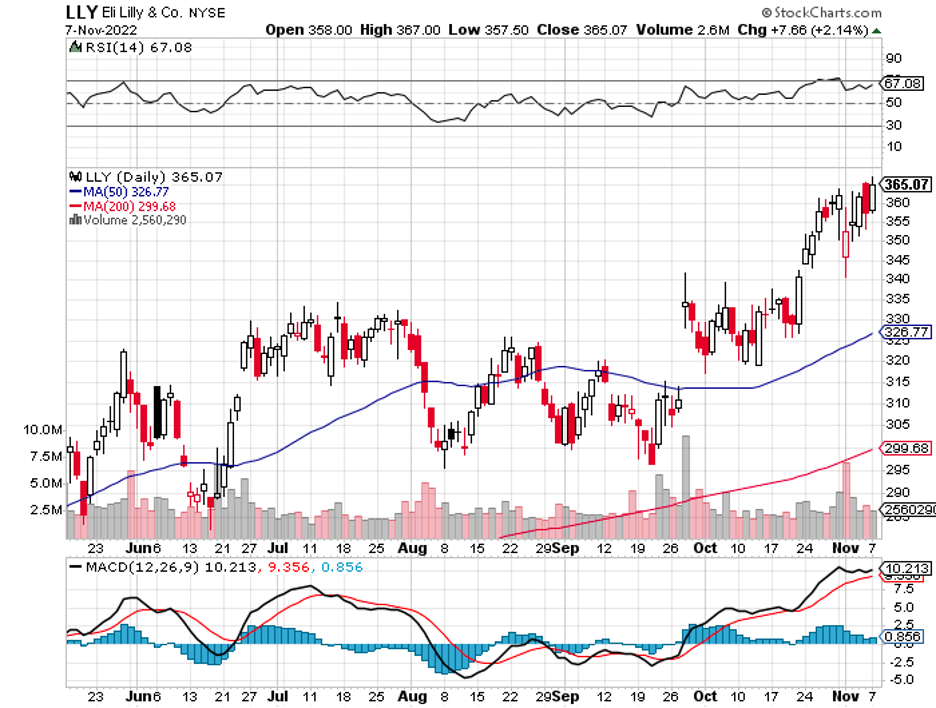The stock market has been down in the past couple of months, and the outlook still does not look all that good, considering that the issues with inflation and economic crises are showing no signs of ending anytime soon.
However, as Berkshire Hathaway Vice Chairman Charlie Munger noted, long-term investors should not be too anxious over “when” the markets will recover.
Instead, he advised “to think about ‘what’ will happen versus ‘when’” as a far more efficient way to behave in these challenging times.
Bearing that advice in mind, a particular biotechnology and healthcare stock stands out and is worth considering given its promising future: Eli Lilly (LLY).
Eli Lilly has grown at a fast pace and is considered among the most prominent pharmaceutical businesses in the world, ranking second behind Johnson & Johnson (JNJ).
At the moment, its market capitalization is at about $340 billion, making Eli Lilly more valuable than juggernaut Nvidia (NVDA) and other big names like Mastercard (MA) and Procter & Gamble (PG).
The most promising drug in Eli Lilly’s pipeline right now is Mounjaro, earlier known as tirzepatide, which recently received the green light from the Food and Drug Administration.
This once-a-week injection is an approved therapy that targets Type 2 diabetes. On top of that, Mounjaro can also be used as a potential weight loss drug.
While there are already existing diabetes drugs that double as weight loss treatments, mainly from Novo Nordisk (NVO), what makes Mounjaro distinct is the fact that it’s the first-ever unimolecular dual GIP/GLP-1 receptor agonist. In layman’s terms, this treatment could function in the same way as two completely different hormones that serve to control blood sugar levels.
Now, the question is: How significant an impact is Mounjaro on Eli Lilly?
Based on data from the National Institute of Diabetes and Digestive and Kidney Diseases, about 2 in every 5 adults are classified as obese, while 1 in 11 adults suffer from severe obesity.
That’s a substantial market. More than that, the consequences of obesity are said to have ripple effects throughout the entire healthcare industry.
In fact, the Centers for Disease Control and Prevention estimate the yearly medical costs in the United States due to obesity to be roughly $173 billion in 2019.
Following its approval, Mounjaro raked in $16 million in sales. Given its unique mechanism and the massive market it can target, Mounjaro is estimated to rake in $25 billion in peak revenue annually.
Moreover, this treatment could not only be a game changer for the company but also the entire healthcare community.
For context, Eli Lilly’s total revenue in 2021 from all its products combined was $28 billion. Needless to say, Mounjaro would put the company on track for some serious growth.
Looking at this weight loss and diabetes drug's trajectory and potential, Mounjaro can benefit Eli Lilly in the same way AbbVie (ABBV) maximized Humira. For years, Humira was hailed as the top-selling drug in the world.
While it’s set to lose its patent protection by 2023, there’s no doubt that this anti-inflammatory drug boosted the share price and bottom line of AbbVie.
Clearly, this is a business poised to become even more valuable soon. This means its current share price could be considered a bargain in the next few years.
How long it would take for Eli Lilly to make money off its pipeline remains a question mark. However, concentrating on “what” is most likely about to happen instead of “when” makes it easy to make a case for Eli Lilly being an excellent growth investment.

